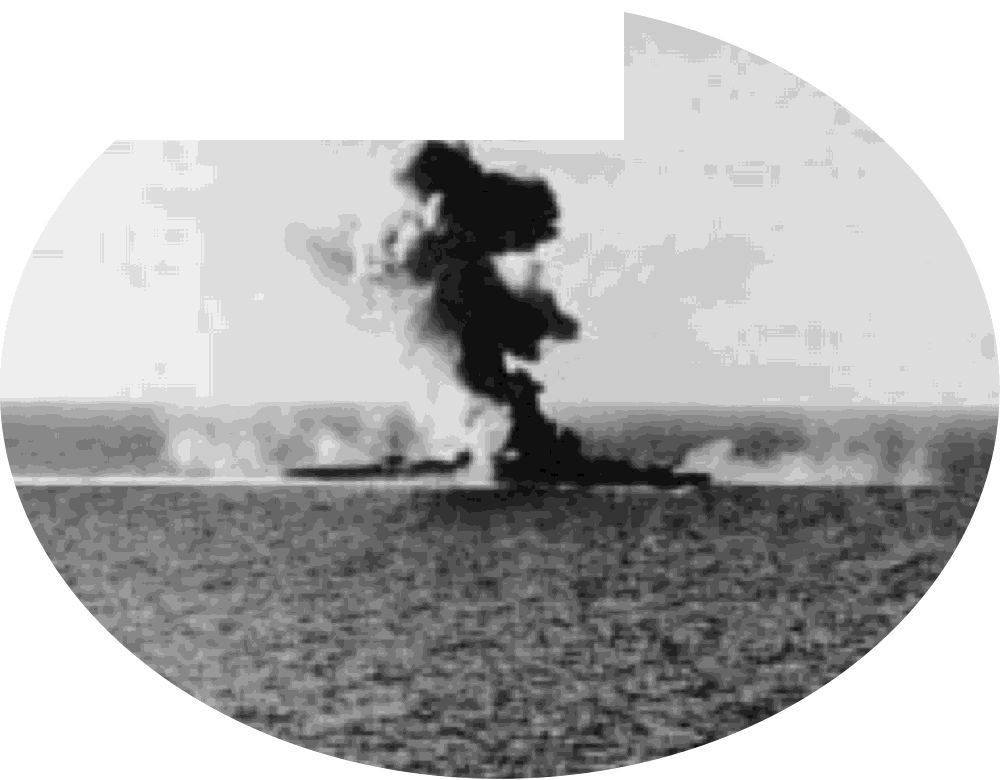

144
UNITED STATES NAVAL AVIATION
1910-1995
1944-Contin ued
27 September
Guided missiles were used in the
Pacific, as Special Task Air Group 1, from its base on
Stirling in the Treasury Islands, began a combat
demonstration of the TDR assault drone. The drones
had been delivered to the Russell Islands by surface
shipping and flown 45 miles to bases in the Northern
Solomons where they were stripped for pilotless flight
and armed with bombs of up to 2,000 pounds. For
combat against heavily defended targets, a control
operator in an accompanying TBM guided the drone
by radio and directed the final assault by means of a
picture received from a television camera mounted in
the drone. In the initial attack, against antiaircraft
emplacements in a beached merchant ship defending
Kahili airstrip on South Bougainville, two out of four
TDRs struck the target ship.
1 October
Patrol Squadrons (VP) and
bombing squadrons (VB) were renamed
nated patrol bombing squadrons (VPB).
multi-engine
and redesig-
7 October
A new Bureau of Aeronautics color spec-
ification went into effect which provided seven differ-
ent color schemes for aircraft depending upon design
and use. The most basic change was the use of glossy
sea blue all over on carrier based aircraft and on sea-
plane transports, trainers and utility aircraft. The basic
non-specular camouflage color scheme, semigloss blue
above and non specular white below, was to be
applied to patrol and patrol bombing types and to
helicopters. For antisubmarine warfare, two special
camouflage schemes-gray on top and sides and
white on bottom, or white all over-were prescribed
with the selection dependent upon prevailing weather
conditions (this had been used by COMNAVAIRLANT
since 19 July 1943). All aluminum was to be used on
landplane transports and trainers and landplane and
amphibian utility aircraft. Orange-yellow was to be
used upon target-towing aircraft and primary trainers.
Another new scheme, glossy red, was specified for tar-
get drones.
7 October
Provision was made for the optional use
by tactical commanders of special identification mark-
ings on combat aircraft, such markings preferably to
be applied with temporary paint.
10 October-30 November
Occupation of Leyte-
The opening blow of the campaign was struck (10
Oct) by Task Force 38 (Vice Admiral Marc A. Mitscher)
against airfields on Okinawa and the Ryukyus. This
force, built around 17 carriers hit airfields on northern
Luzon (11 and 14 Oct), on Formosa (12-14 Oct), and
in the Manila area (15 Oct), destroying 438 enemy air-
craft in the air and 366 on the ground in 5 strike days.
These and other strikes concentrated on reinforcement
staging areas and effectively cleared the air for the
landing (20 Oct) of Southwest Pacific Army troops on
Leyte. Fast carrier support of the ground campaign
was supplemented (18-23 Oct) by the action of 18
CVEs organized in three elements under TG 77.4 (Rear
Admiral Thomas 1. Sprague).
A major disruptive effort by the Japanese Fleet was
opposed by the Fast Carrier Force of the Third Fleet
(Vice Admiral William E Halsey) and by surface and
air elements of the Seventh Fleet (Vice Admiral
Thomas C. Kinkaid) in three related actions of The
Battle for Leyte Gulf (23-26 Oct). As the Japanese
Fleet, in three elements identified as Southern, Central,
and Northern Forces, converged on Leyte Gulf from as
many directions, Fast Carrier Force aircraft (24 Oct) hit
the Southern Force in the Sulu Sea, attacked the
Central Force in the Sibuyan Sea, sinking the 63,000
ton battleship
Musashi
and a destroyer, and was itself
under air attack resulting in the loss of
Princeton.
Seventh Fleet surface elements turned back the
Southern Force in a brief intensive action before day-
light in the Battle of Surigao Strait (25 Oct), sinking
two battleships and three destroyers. The Japanese
Central Force made a night passage through San
Bernardino Strait and at daylight took under fire six
escort carriers and screen of TG 77.4, and was
opposed by a combined air and ship action in the
Battle Off Samar (25 Oct), in which
Gambier Bay,
two
destroyers, and one destroyer escort were sunk by
enemy gunfire and three Japanese heavy cruisers were
sunk by carrier air. At the same time the Fast Carrier
Force met the Northern Force in the Battle Off Cape
Engano, sinking the heavy carrier
Zuikaku
and light
Attack on Japanese cruiser, Battle for Leyte Gulf
470 l2
 |
44 |
 |